Planning a 5-day Ireland itinerary can be a pain in the backside… So, we’ve done all of the hard work for you!
We’ve spent 25+ years travelling around Ireland and the itinerary below leans on that experience and the many mistakes we made along the way!
In a nutshell, this 5-day itinerary:
- Starts and ends in Belfast City
- Has been meticulously planned
- Has an hour-by-hour itinerary for each day to save you time/hassle
- Follows logical routes that take you to hidden gems, tourist favourites and great pubs and restaurants
Who this itinerary will suit

Now, before you scroll down, take 10 seconds to look at the graphic above – each of our road trip itineraries have been tailored to specific needs.
This road trip is specifically for those of you:
- Starting in/near Belfast City
- Using public transport and organised tours
- Looking to explore at a slow pace
- With a low level of fitness (i.e. it avoids long walks and hikes)
- Remember, we have hundreds of different itineraries here if this one doesn’t suit you
An overview of this itinerary

The map above gives you a very high-level overview of where this route will take you.
It uses several bases (e.g. Cork for 3 nights) and provides you with day-long road trips you can head off on, so you avoid having to change accommodation constantly.
Now, I’ll stop rambling on – here’s a day-by-day insight into each of the days below!
Day 1: Discovering Belfast City: Northern Ireland’s Capital

Photos via Shutterstock
It’s day one, so welcome to Belfast, the capital of Northern Ireland and the start point of your epic 5-day tour of Ireland!
For today, we’re going to assume that you’ve arrived in the city in the early afternoon, giving you ample time to grab lunch and take in a couple of attractions.
First of all, you’ll probably want to check into your accommodation. You’ll be spending two nights in Belfast, and there are plenty of great hotels and guest houses to choose from. Below, we’ve listed some of our top choices for every budget.
Our Belfast accommodation recommendations
- Budget: Vagabonds Hostel(in the city centre with top reviews) and Amica Guesthouse (short bus/drive from city centre with great reviews)
- Mid-range: Ten Square Hotel and Maldron Hotel Belfast City (both are super central with exceptional reviews)
- Luxury: The Fitzwilliam and The Merchant (both gorgeous, high-end hotels at the heart of the action)
Getting from the airport to the city
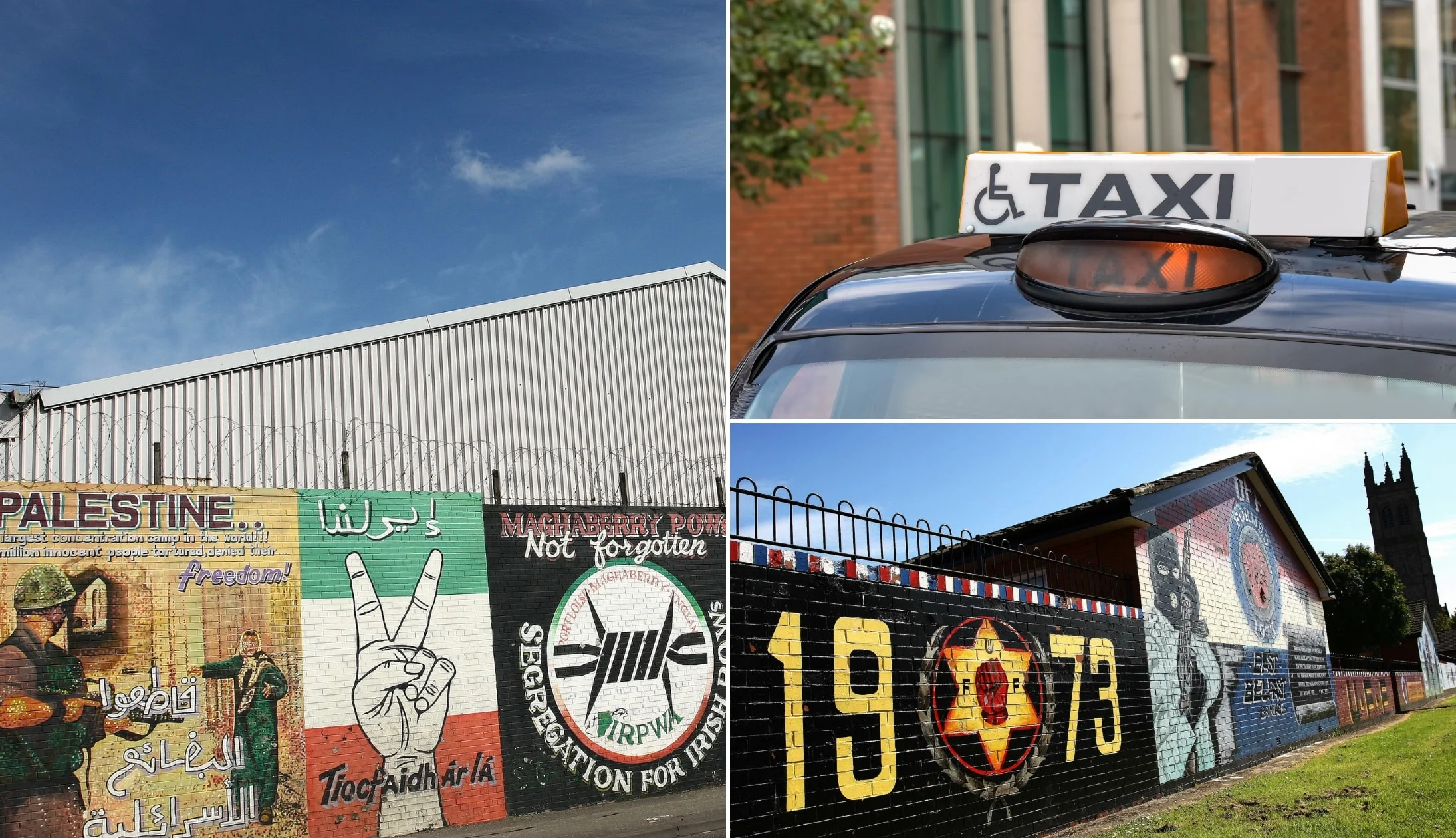
Photos via Shutterstock
With accommodation booked, you’ll need to know the best way into the city from the airport.
That all depends on which airport you’re flying to. George Best Belfast City Airport is much closer, but also much smaller, and typically only handles domestic flights from the UK and Ireland.
Belfast International Airport (BFS), is approximately 20 miles from Belfast city centre and handles both international and domestic flights.
Here are your options for both.
From George Best Belfast City Airport

Photos via Google Maps
Getting to Belfast from the city airport using public transport is quick, easy, and affordable. We’ve outlined three options below.
Option 1: Bus
The Airport Express 600 Service operates from right outside the main doors of the airport to the Europa Bus Terminal in Belfast. It operates every 30 minutes, 7 days a week and takes around 10 minutes to get to the city centre. You can buy the ticket from the driver or at the tourist information desk at the airport, and they cost £2.60 (€3.00) one way.
The bus is definitely the cheapest and most convenient option, but you may need an additional mode of transport to get you to your accommodation.
Option 2: Train
There is a NI Railways train (line 1) that will take you from the airport’s Sydenham train station to the city every hour. It’s a very quick 10 to 20-minute journey depending on the station you jump off at and is reasonably priced. The train terminates at Great Victoria Street Station, which is very central, or you can jump off earlier at Lanyon Place (Belfast Central Station), close to St. George’s Market and the town centre.
However, wait times can be long, and you’ll need to walk 15 minutes to get to the station. Like the bus, you may still need an additional mode of transport to get you to your accommodation.
Option 3: Taxi
You can hire a taxi at the airport to take you to the city. It takes around 10 minutes and costs around £38 depending on where you’re going exactly. Unlike the other options, you can get straight to your accommodation, so if you’re carrying a lot of luggage, it could be worth the extra cost.
From Belfast International Airport (BFS)
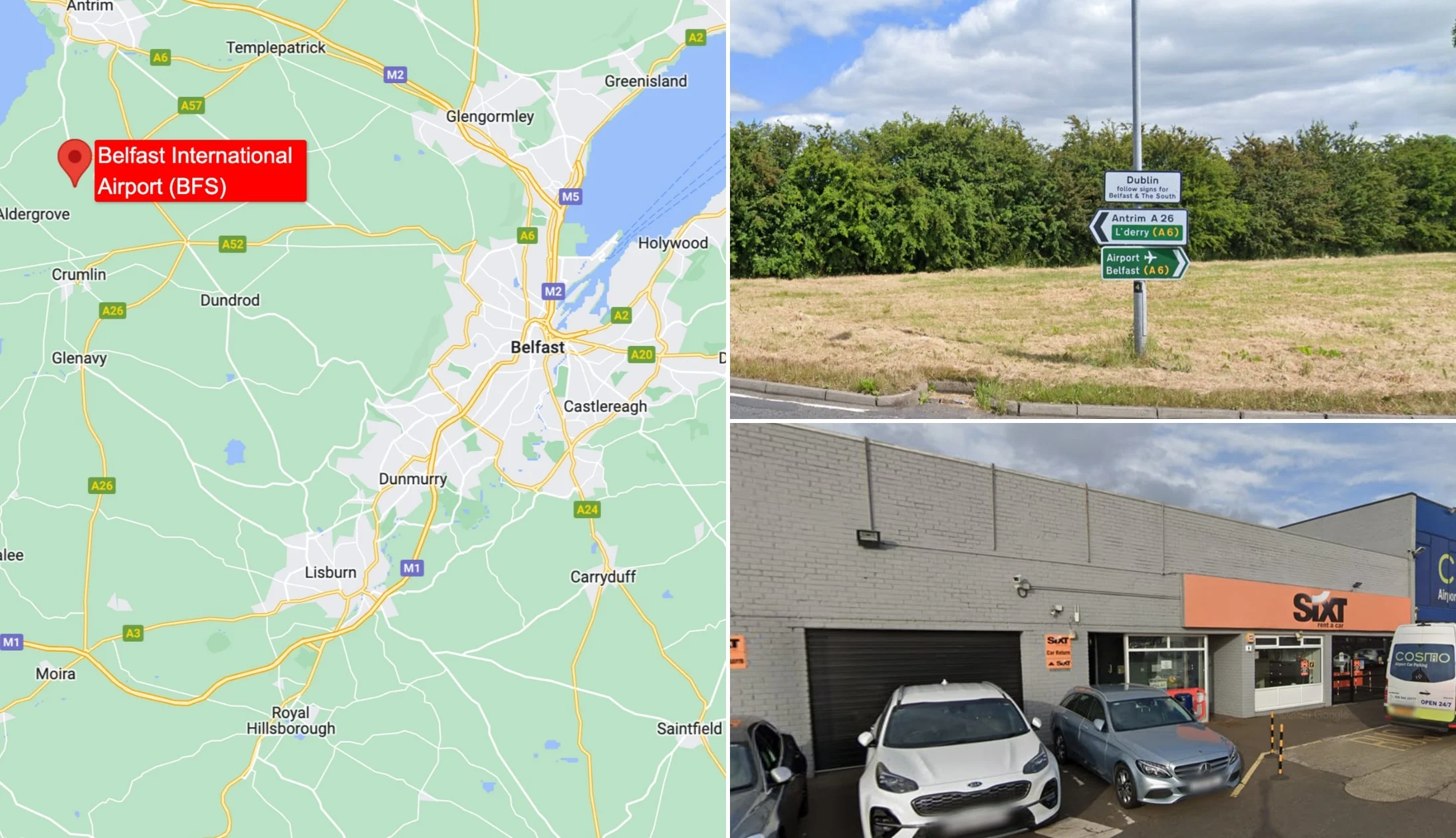
Photos via Google Maps
Getting to Belfast from the international airport using public transport is also easy and affordable. By far the best option is the Airport Express.
The Airport Express
The Airport Express 300/300a Service operates from right outside the main doors of the airport and goes to the Europa Bus Terminal in the centre of Belfast. It operates every 15 to 20 minutes or so, 7 days a week and takes around 45 minutes to get to the city centre.
You can buy the ticket onboard from the driver, at the airport from the Translink Ticket Vending Machine, or from the Visit Belfast information desk. Tickets cost £8 (€10.00) one way.
Stop 1: Lunch

Photos via The Lamppost Cafe on FB
You’ll probably have a mighty hunger after all that travelling. Fortunately, there’s no shortage of stunning places to eat out, especially in the city centre. So, first things first, head to the heart of town. Once you’re there, you’ll find no end of cafes, restaurants, and pubs that are sure to satisfy your hunger.
Almost any good pub will do traditional Irish fayre, so if you’re looking for gorgeous soda bread, seafood, stews, and much more, you’ll have plenty of choices. Burger fans should definitely check out Bunsen on Hill Street. With a small, carefully curated menu, you can’t go wrong. Blu is another great choice, with a sleek and modern menu that caters to everyone, although for us, it’s hard to resist the steaks!
Stop 2: Crumlin Road Gaol

Photos via Shutterstock
After a good feed, it’s time to take in some local attractions. Crumlin Road Gaol is a leisurely 16-minute walk away from the city centre. The self-guided tour takes you on a 70-minute journey through the tunnels and corridors that make up the 150-year-old prison. Complete with information boards and videos, you’ll get to see various parts of the old gaol, including the holding cells, execution chamber, and the prison graveyard.
Stop 3: Belfast Black Cab Tour

Photos via Shutterstock
The Belfast Black Cab tour offers an incredible experience that shouldn’t be missed. Each of the tour guides lived through the Troubles, lending real-life experience to the tours. You’ll pass through various parts of Belfast that you might not feel comfortable visiting by yourself. All the while, your guide will regale you with stories and first-hand accounts of the history behind each place.
You’ll also see a lot of fantastic murals and other sights, like the iconic Belfast Peace Wall. It’s a great way to learn more about Belfast’s long, rich, and sometimes sad history. Tours depart from Jurys Inn on Victoria Road, which is about a 23-minute walk from Crumlin Road Gaol.
Stop 4: Dinner, drinks and live music

Photo left: Silvia Franceschetti (CC BY-SA 3.0). Others via Bittle’s Bar on FB
At the end of the Black Cab Tour, you’ll be dropped off back in the Cathedral Quarter, in the heart of the city.
You’ll find tons of options for food, drink, entertainment, and plenty of live music here, so whether you go back to your accommodation to freshen up first or head straight out is up to you.
Our Belfast food recommendations
There’s some outstanding restaurants in Belfast City. First up, Deanes is a Belfast institution and a must-visit while you’re in the city. There are three venues to choose from, each focusing on something different; Deanes Meat Locker, Deanes Love Fish, and Deanes at Queens.
Whichever you choose, you’re in for a fine feed. EDO is another favourite of ours, a stunning tapas and cocktail bar with incredible sharing platters.
Or, for a fancy first meal in Ireland, head to The Ginger Bistro, near the Belfast Opera House. Their menu is out of this world, though that’s no surprise when you consider it was voted the best restaurant in Northern Ireland.
Our Belfast pub recommendations
There are countless incredible pubs and bars in Belfast for a tasty after-dinner tipple. Check out traditional options like the unmistakable Bittles Bar, with its stunning range of local beer and Irish whisky.
The Duke of York is another old-school boozer, walls adorned with knick-knacks from yesteryear and serving up a fine pint of Guinness.
Finally, we couldn’t forget Madden’s Bar, a cosy, traditional pub complete with a roaring wood-burning stove and a friendly atmosphere. Somewhat overlooked, it’s a hidden gem, beloved by those in the know!
Traditional musicians from across Ireland come to play at Kelly’s Cellars every Tuesday, Wednesday, Thursday, and Saturday.
Other fantastic options for music include Fibber Magees, another charmingly old-fashioned pub with a lively atmosphere, and the John Hewitt.
Day 2: The Causeway Coast

Photos via Shutterstock
After a fantastic first day enjoying the sights of the city, it’s time to hit the road and check out the incredible Causeway Coastal Route.
There are a bunch of tours to choose from, including ones that bring you to the Game of Thrones locations. We’ve picked this one that just does a full-day trip to the Giants Causeway while taking in a clatter of attractions along the way.
Grab a bit of breakfast beforehand. We’d heartily recommend the Lamppost Cafe on Newtownards Road for a slap-up cooked Irish breakfast—they also have a cooked vegan breakfast. Alternatively, check out the Grapevine in the Cathedral Quarter for porridge, bagels, baps, and breakfast burritos.
Stop 1: Carrickfergus Castle
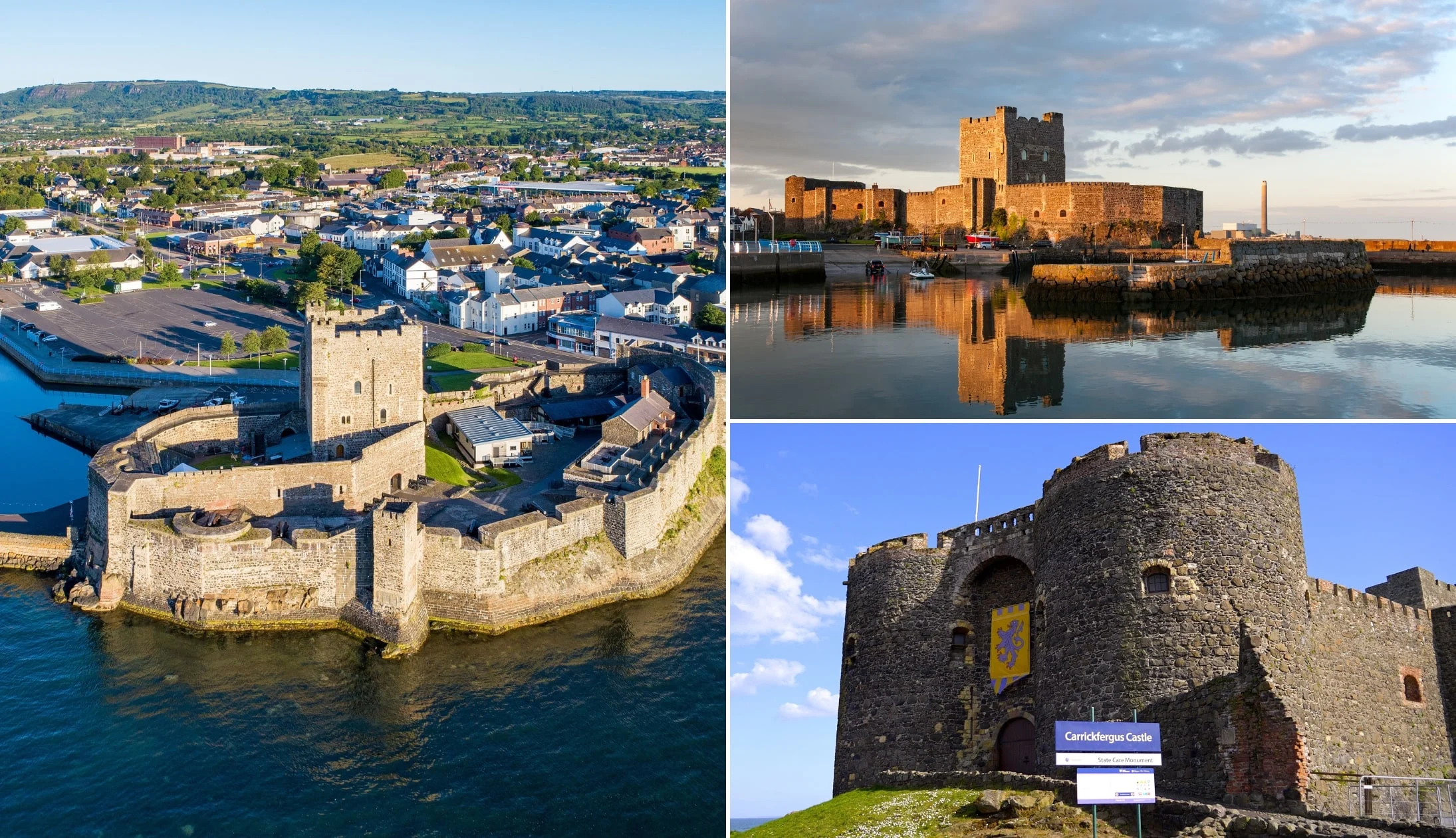
Photos via Shutterstock
Carrickfergus Castle is one of the most well-known and best-preserved castles in Ireland. It’s just 25 minutes from Belfast City Centre, making it an ideal first stop on your way to the Causeway Coast. While you won’t be going in for the tour, you’ll get plenty of time to enjoy the surroundings and get some photos.
Dating back to the 12th Century, this epic fortress boasts huge walls that protect it from the sea, plus a number of mighty towers. It’s been the site of countless battles over the years and it’s no surprise that it’s home to a ghost.
Stop 2: Cushendun Caves
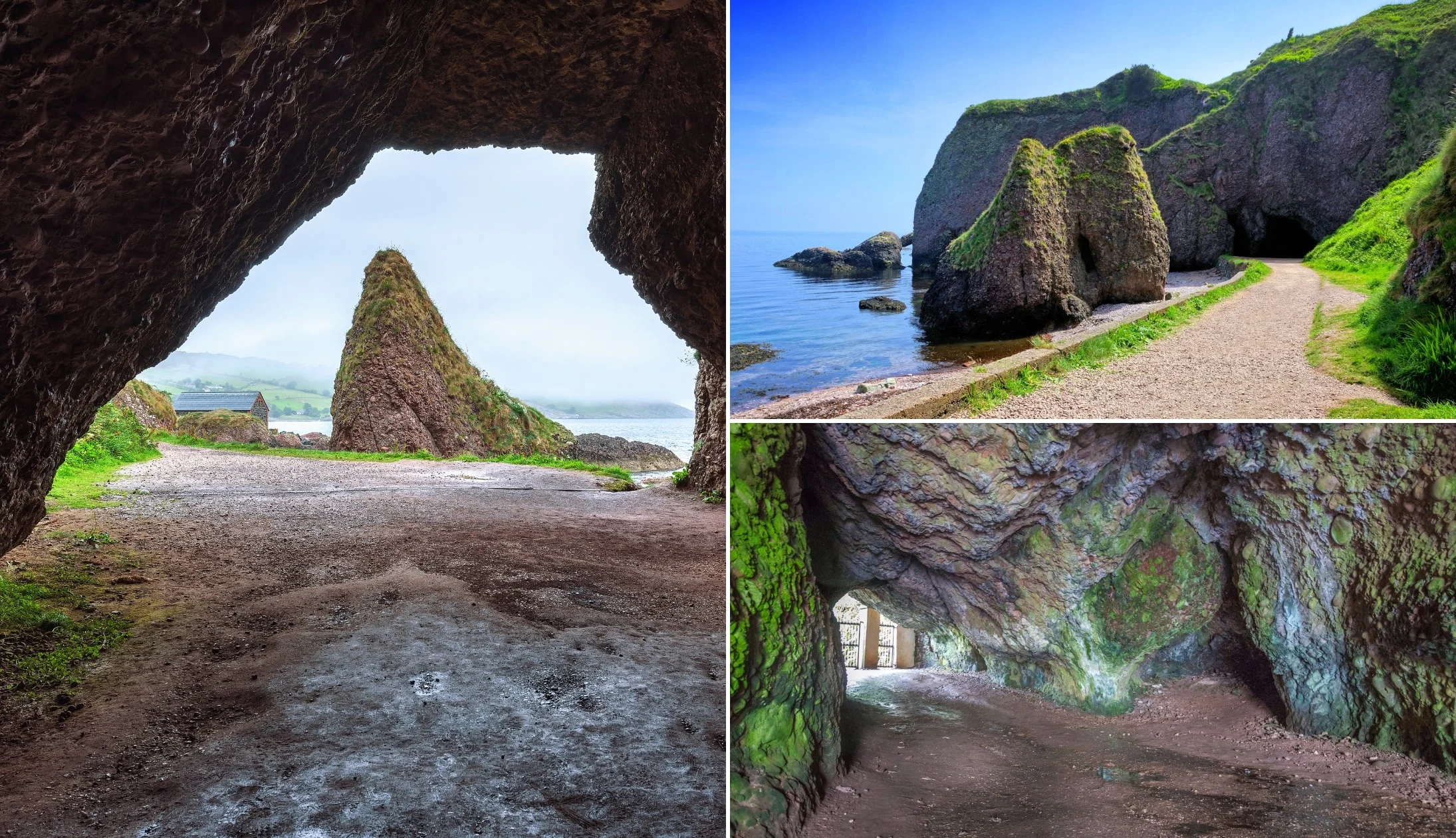
Photos via Shutterstock
The coast road is absolutely stunning between Carrickfergus Castle and your next stop, Cushendun Caves, with sights like the epic Black Arch along the way.
Formed over hundreds of millions of years, these days the caves are most famous for appearing in the Game of Thrones series. The caves formed the backdrop for the Stormlands and were the setting for a couple of important scenes from the series in season 2 and again in season 8. This explains why you’ll find plenty of GoT fans heading out to explore this spot.
While the place is incredibly impressive to explore, it’s not an overly large area and most people only spend about 15-20 minutes getting around them. It’s also completely free to visit, which makes it a nice stop on the Causeway Coastal Route.
Stop 3: Carnlough
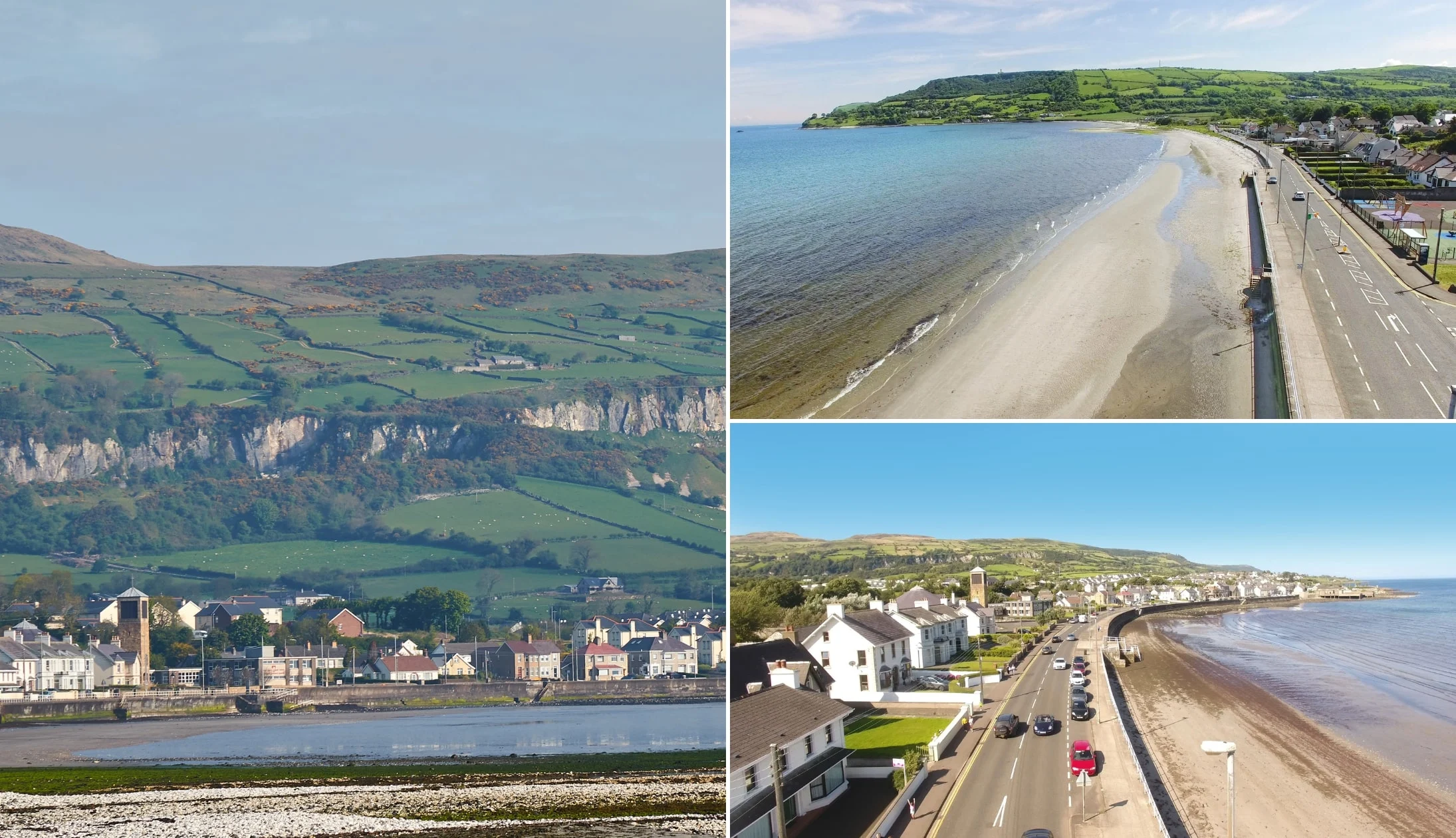
Photos via Shutterstock
The charming village of Carnlough is a top place to visit, and it’s located at the foothills of Glencloy. One of the 9 Glens of Antrim, it’s famed for its beautiful harbour, from which small fishing vessels and pleasure boats set out to sea.
The harbour was another Game of Thrones filming location and was used in several scenes in the show. If time allows, it’s worth strolling through the village and enjoying the gorgeous views from the waterfront.
Stop 4: Ballintoy for Lunch

Photos via Shutterstock
The quirky Ballintoy Harbour is one of the more well-trodden stop-offs on the Causeway Coastal Route. Based in the picturesque village of the same name, Ballintoy Harbour is home to everything from sea stacks and rocky islands to amazing cliff tops and more. Of course, there’s a Ballintoy Harbour Game of Thrones link too! It was one of several filming locations and was used for the exterior Pyke shots and to stand in as the Iron Islands.
For lunch, you’ll be heading to the Fullerton Arms where you’ll find a stunning menu that takes in a range of fresh seafood dishes, as well as steaks, pasta, burgers, pies, and much more. Whenever we visit, the Strangford Rope Mussels served with Irish wheaten bread are a must, available in a variety of sauces.
Stop 5: Giants Causeway

Photos via Shutterstock
The legendary landscape of the Giants Causeway boasts more than 40,000 basalt pillars, jutting proudly out from the sea. In Irish folklore, the path was used by the hero Fionn Mac Cumhaill to get to Scotland, where he fought an enemy giant.
It was formed more than 60 million years ago and has been studied by geologists for more than 300 years, making it one of the most important and unique nature reserves on earth. You’ll spend some time climbing over the ancient stones, while your guide regales you with the myths and legends that surround this world-famous attraction.
Stop 6: Dunluce Castle
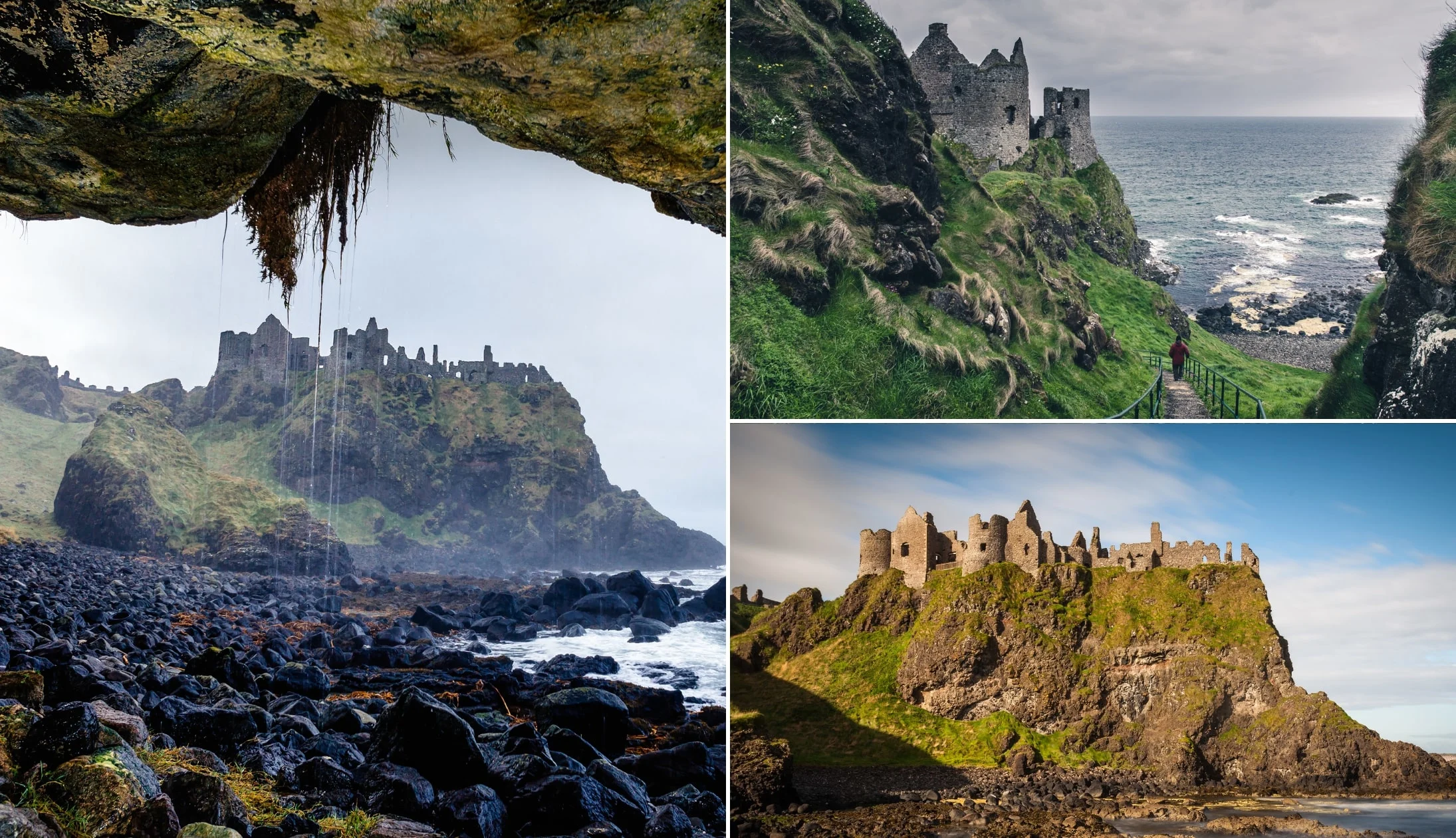
Photos via Shutterstock
Your next stop is the legendary Dunluce Castle. It’s a fantastic place to wander around, taking in the castle ruins and getting some nice photos. The castle dates back to the 1500s and is rich in history. Of course, there are several legends, most notably the Dunluce Banshee, whose wails and screams are said to haunt the Northeast Tower. It’s another top spot for Game of Thrones fans, too—the castle served as the Greyjoy fortress on the Iron Isles.
Stop 7: The Dark Hedges

Photos via Shutterstock
Your final stop before heading back to Belfast is the epic Dark Hedges. It’s here that you’ll find an avenue lined with 150 beech trees that has delighted photographers, painters and directors for many a year.
Once again, there’s a big aul Dark Hedges Game of Thrones link! If you’re a fan of the insanely successful HBO series, then you’ll probably recognise the Dark Hedges as ‘The Kings Road’. The avenue features in Season 2, Episode 1: ‘On the King’ s Road’. The Dark Hedges were featured during a scene where Arya Stark escaped from King’s Landing.
The hedges date to 1755 and were planted alongside the road running up to Gracehill House in an attempt to make the road up to the estate more formidable. Looks like it worked! Grab some photos, look out for the spooky Grey Lady, and then it’s back on the coach to Belfast for dinner and drinks.
Stop 8: Back to Belfast for the night

Photo left: Silvia Franceschetti (CC BY-SA 3.0). Others via Bittle’s Bar on FB
Taking a more direct route back will have you in Belfast in about an hour and 30 minutes or so.
You’ll find tons of options for food, drink, entertainment, and plenty of live music here, so whether you go back to your accommodation to freshen up first or head straight out is up to you.
Our Belfast food recommendations
There’s some outstanding restaurants in Belfast City. First up, Deanes is a Belfast institution and a must-visit while you’re in the city. There are three venues to choose from, each focusing on something different; Deanes Meat Locker, Deanes Love Fish, and Deanes at Queens.
Whichever you choose, you’re in for a fine feed. EDO is another favourite of ours, a stunning tapas and cocktail bar with incredible sharing platters.
Or, for a fancy meal, head to The Ginger Bistro, near the Belfast Opera House. Their menu is out of this world, though that’s no surprise when you consider it was voted the best restaurant in Northern Ireland.
Our Belfast pub recommendations
There are countless incredible pubs and bars in Belfast for a tasty after-dinner tipple. Check out traditional options like the unmistakable Bittles Bar, with its stunning range of local beer and Irish whisky.
The Duke of York is another old-school boozer, walls adorned with knick-knacks from yesteryear and serving up a fine pint of Guinness.
Finally, we couldn’t forget Madden’s Bar, a cosy, traditional pub complete with a roaring wood-burning stove and a friendly atmosphere. Somewhat overlooked, it’s a hidden gem, beloved by those in the know!
Traditional musicians from across Ireland come to play at Kelly’s Cellars every Tuesday, Wednesday, Thursday, and Saturday.
Other fantastic options for music include Fibber Magees, another charmingly old-fashioned pub with a lively atmosphere, and the John Hewitt.
Day 3: The trip to Dublin

Photos via Shutterstock
Next stop, Dublin City! We’ll be taking the train to the vibrant and historic Dublin City, where we’ll be spending two nights.
Before you catch your train, enjoy a decent breakfast at your accommodation, or check out one of the cafes from yesterday. Alternatively, you’ll find shops at the train station if you want to buy something to go.
Recommended accommodation in Dublin
- Budget: Abigail’s Hostel (Temple Bar), Jacobs Inn (central hostel) and the Generator Hostel (short walk from the city)
- Mid-range: Dublin Skylon Hotel (just outside the city), Wren Urban Nest (Temple Bar) and the Harding Hotel (very central)
- Luxury: The Merrion (St. Stephen’s Green – very central) and The Westin (just off Grafton Street)
Getting around Dublin + money savers
- Time savers: If you want to avoid walking where possible, it’s worth getting a ticket for the Hop On Hop Off Bus around Dublin. It goes to or near all of the main sites on this itinerary plus plenty more.
- Money saver: If you’re visiting the ‘main’ Dublin attractions, the Dublin Pass can save you €€€ (here’s how)
Stop 1: Belfast Lanyon Place Train Station

Photos via Google Maps
After a good feed, it’s straight to the train station. Lanyon Place is just a short walk from the Cathedral Quarter, or you can take a cab there from your accommodation.
There are multiple trains to Dublin every day, more or less every four hours or so, and the journey will typically take just over two hours, passing through some gorgeous scenery.
Stop 2: Dublin Connolly Train Station
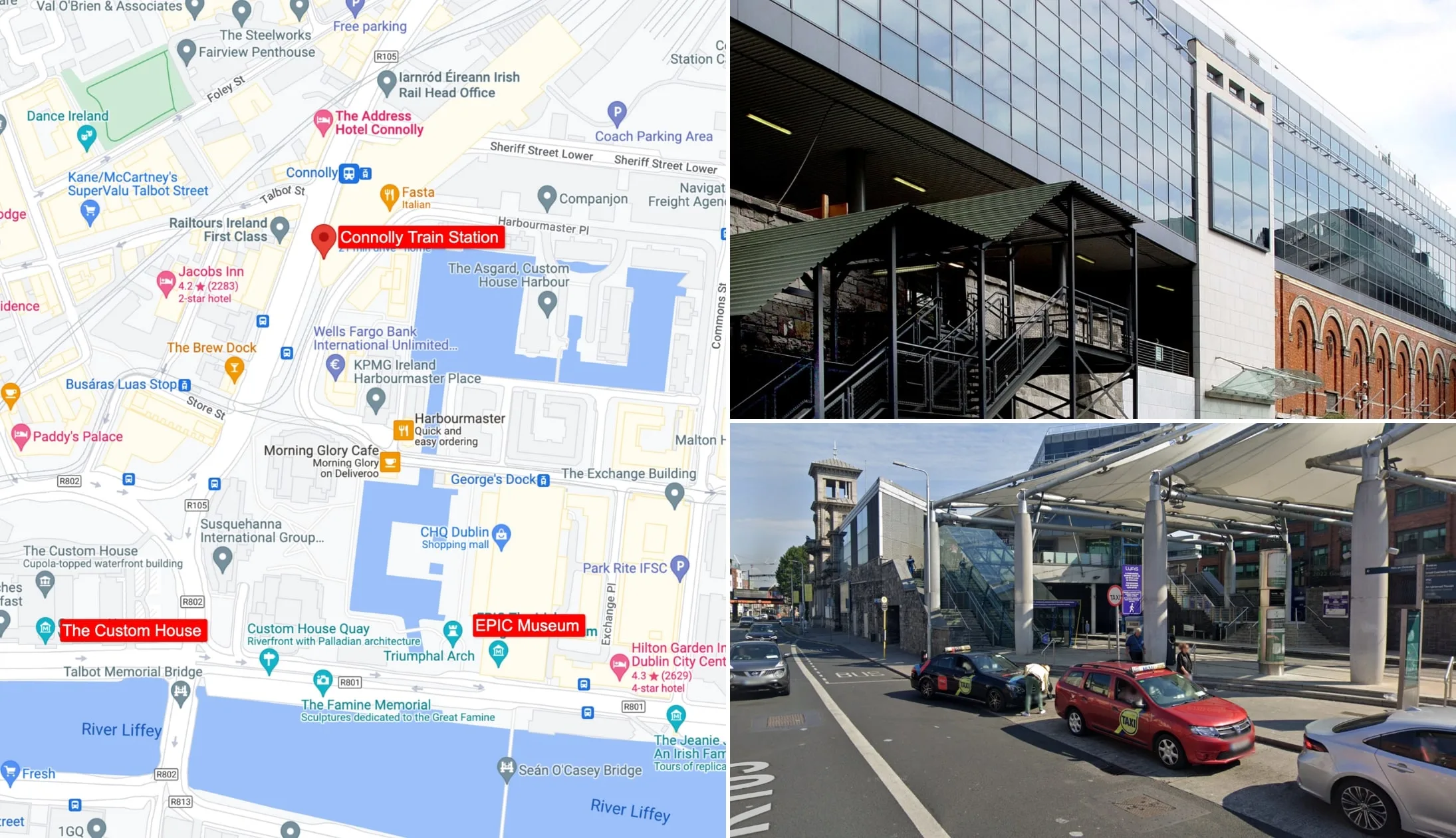
Photo left and bottom right: Google Maps. Other: Shutterstock
Welcome to Dublin, the capital of the Republic of Ireland! From Connolly Station, it’s about a 10-minute walk to Trinity College or 20 minutes to Temple Bar.
You can also take a bus, which will generally take around 15 minutes or so. Look for bus routes 14, 15, 27, and 151, though there are probably more to be fair. Alternatively, hop on the Luas Red Line, the station is just around the corner.
Alternatively, head to your accommodation, drop your things off and head into town once you’ve settled in.
Stop 3: Trinity College

Photos via Shutterstock
When you’re ready, head straight for Trinity College to see the Book of Kells, arguably the most famous cultural attraction in Dublin.
If you can, we highly recommend pre-booking your tickets online, as the queues can get really long (bordering on ridiculous!). This fast-track ticket allows you to dodge the queue and gets you into Dublin Castle, too!
Spend around one hour seeing the Book of Kells, walking around the exhibit, and taking in the beauty of the Old Library. After that, give yourself another 20 minutes or so to walk around the university campus.
Stop 4: Lunch

Photos © Tourism Ireland
There’s plenty of great restaurants in Dublin, but for lunch we suggest you head to Neary’s. It’s just up the road from Trinity College, along the bustling Grafton Street.
This old-school pub is a classic and it serves up a range of simple lunch options, like sandwiches, soup, toasties, and Carlingford Oysters, all washed down with a tasty pint of Guinness.
Affordable and delicious, we can’t recommend it highly enough. Sprout and Co on Dawson Street is another good shout for a quick, light lunch that tastes great and is close to Trinity College.
Stop 5: The Ha’penny Bridge (via Temple Bar)
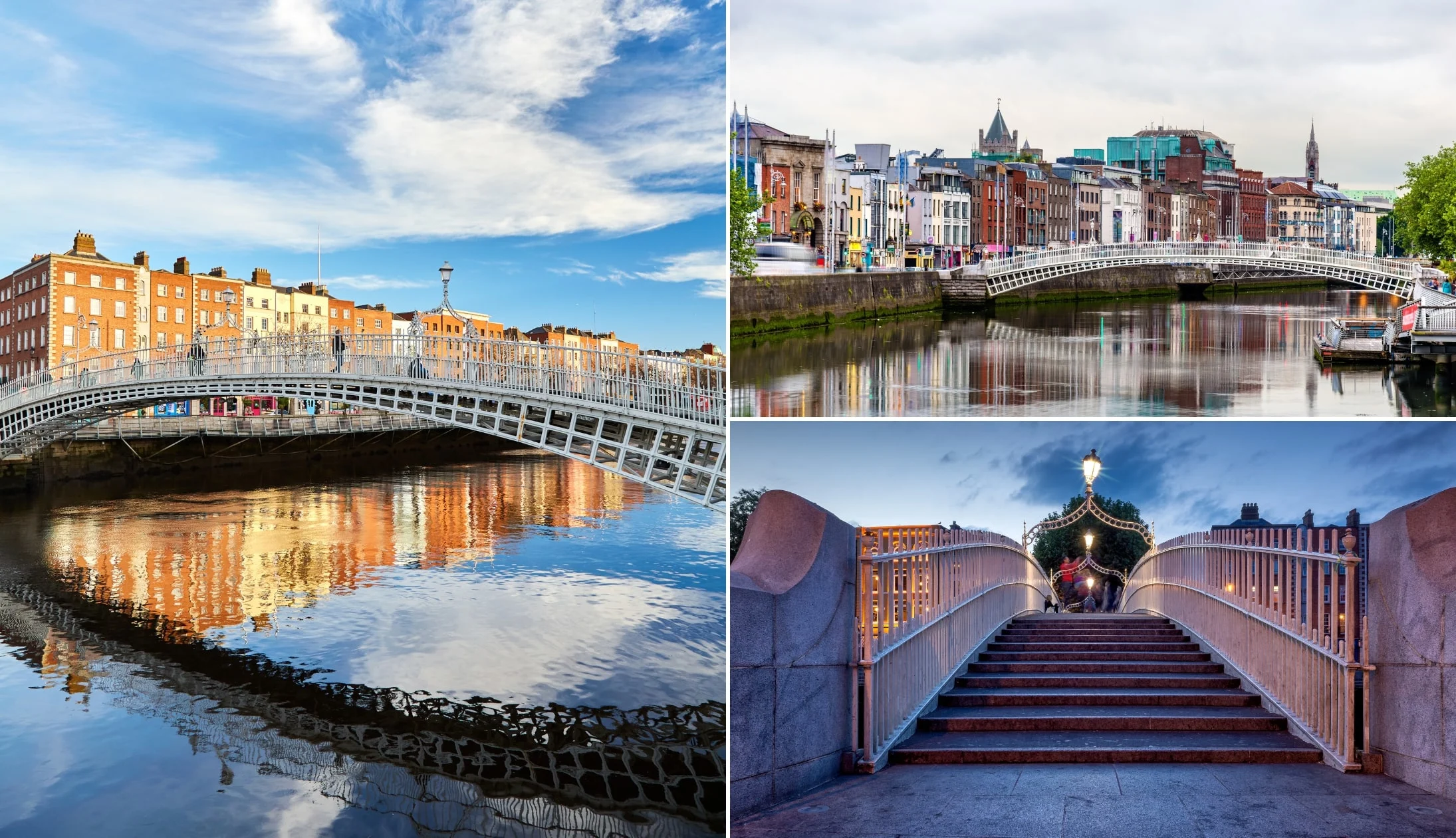
Photos via Shutterstock
The Ha’penny Bridge is an iconic sight in Dublin and crossing it is a must. From Neary’s, it’s about a ten-minute walk that passes through the vibrant Temple Bar area.
As you pass through Temple Bar, you’ll see why this is the nightlife capital of Dublin, with endless pubs and clubs lining the streets.
The bridge itself is a quaint little footbridge over the River Liffey. In the old days, you’d have to pay a toll of half a penny to cross, hence the name.
If you fancy a coffee after your walk, head to Vice Coffee Inc, just over the bridge for a superb brew. You’ll also find tons of shops and pubs to enjoy on either side of the bridge.
Stop 6: Christ Church Cathedral
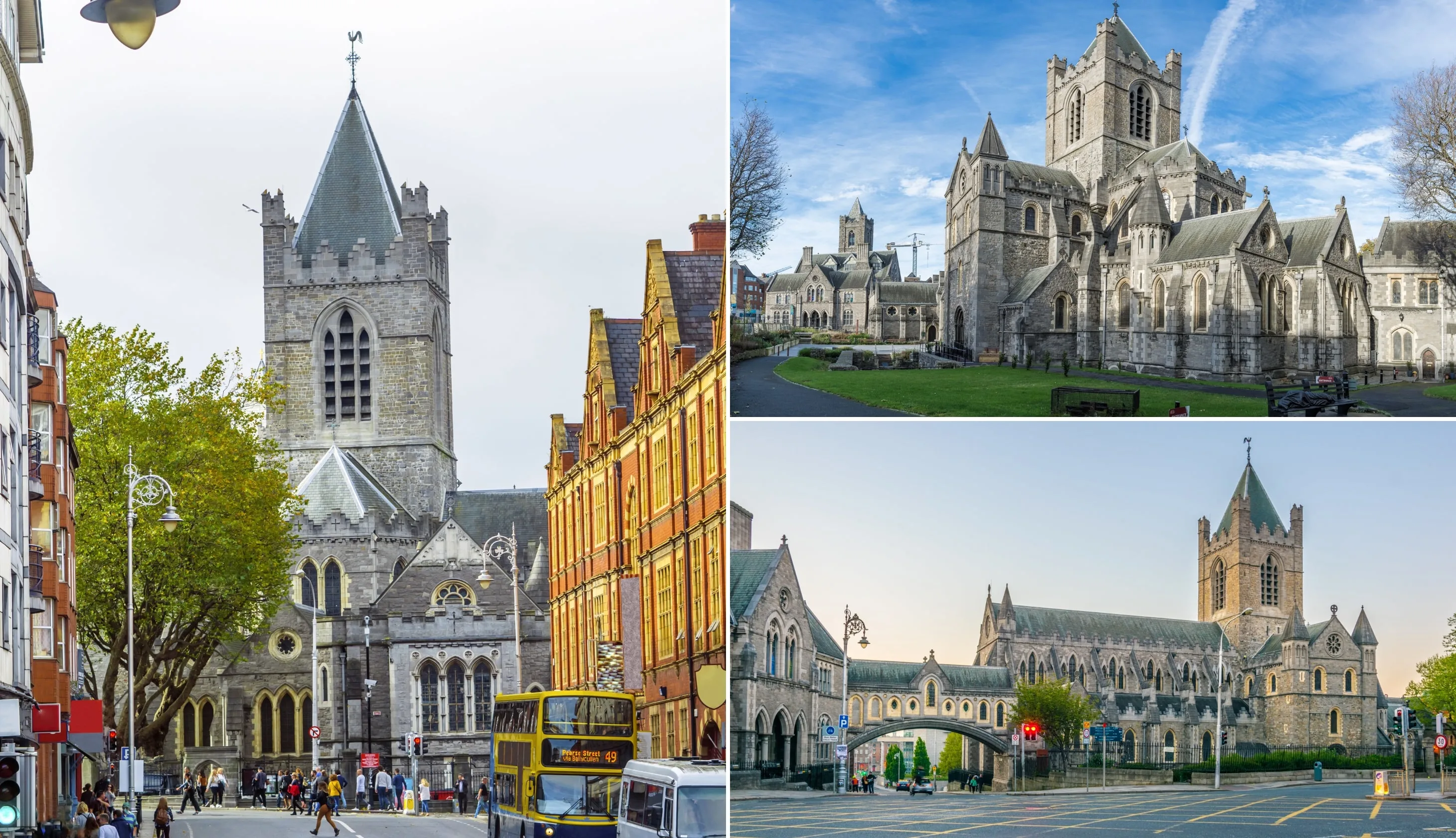
Photos via Shutterstock
Christ Church Cathedral (a 9-minute stroll from the bridge) is another of Dublin’s top attractions and dating back more than 1,000 years, it’s pretty much as old as the city itself!
Steeped in history, it was originally founded by Viking king Sitruic Silkenbeard, but it’s come a long way since those early days (you can grab a ticket online here).
After admiring the stunning architecture from the outside, you can take a self-guided audio tour inside the cathedral.
Along the way, you’ll discover Strongbow’s grave and explore the crypts, which are home to a wealth of artefacts and exhibits, with such treasures as the mummified cat chasing a mummified rat inside an organ pipe.
Listen out for the record-breaking bells of Christ Church, and if you’re really lucky, you might catch the choir in action.
Stop 7: Guinness Storehouse

Photos © Diageo via Ireland’s Content Pool
Next up is another iconic Dublin attraction, the Guinness Storehouse. It’s a bit of a walk from the cathedral, around 17 minutes or so. However, you can easily take the bus to cut out the bulk of the walk. Head round the corner to High Street Stop 1937 and jump on any bus that’ll drop you at Steevens Lane, just ask the driver, but the 13, 27, 77A, 123, G1, and G2 all head that way. From Steevens Lane, it’s just a 4-minute walk to the Guinness Storehouse.
Dublin is the home of Guinness, and this tour of the brewery is a must for anyone with a love for the black stuff. In fact, even if you’re not a fan of beer, this is a fantastic attraction to visit. Book your tickets in advance to avoid the queues. You can do a self-guided tour, but the guided-tour is, in our minds, the better option.
Your knowledgeable guide will tell the iconic story of how Guinness, from its cheeky origins to where it is now, as well as going over the brewing process. Along the way, you’ll hear a number of humorous tales, enjoy some of the brand’s most iconic adverts, and sample the brew at various stages of the process.
To finish, you’ll get a free pint in the fantastic Gravity Bar. Situated on the seventh floor, you’ll enjoy great views over the city as you sink a pint or two.
Stop 8: Dinner, drinks and live music
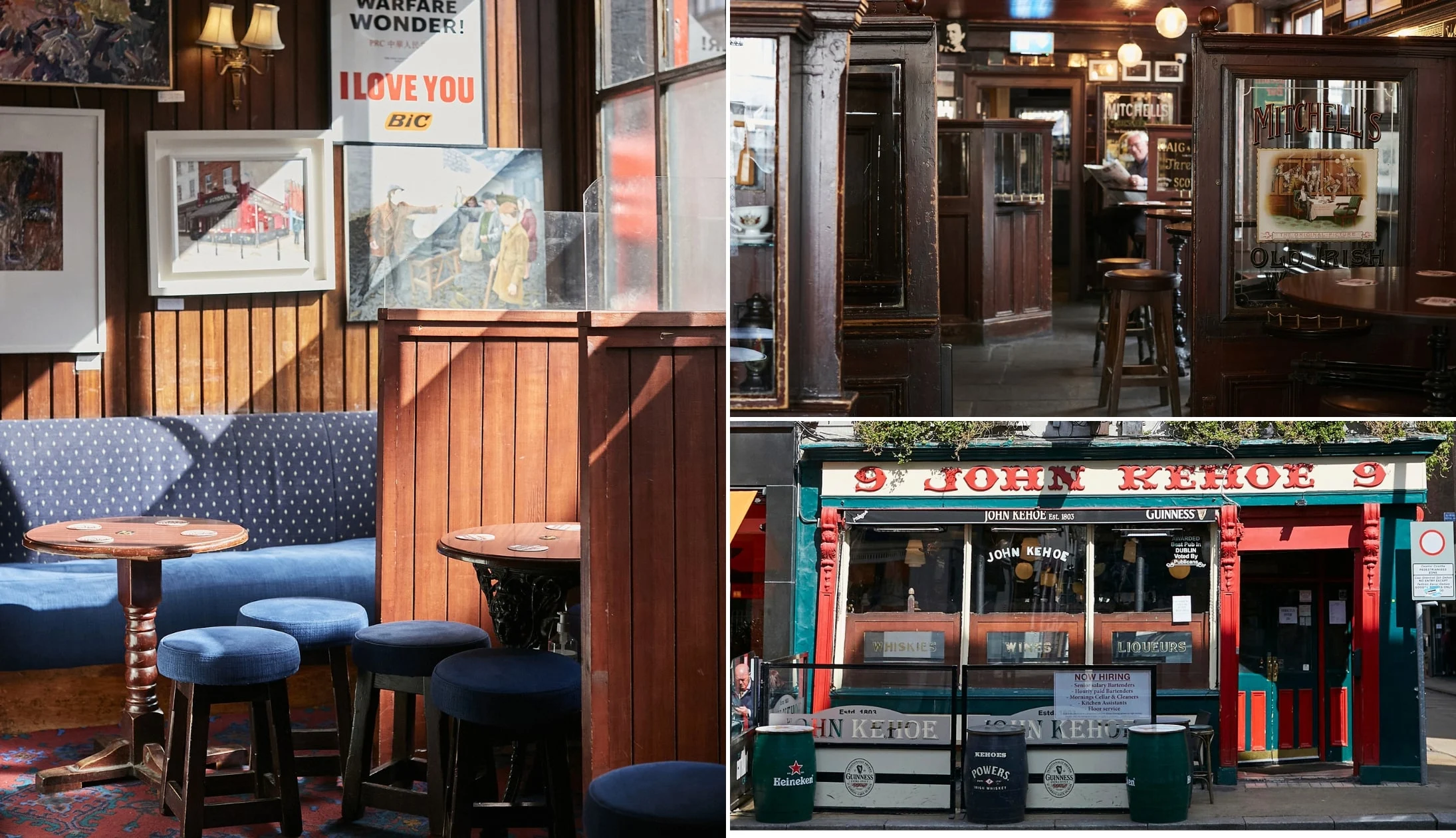
Different trad bars in Dublin. © Tourism Ireland
When you’ve finished at the Guinness Storehouse, you’ll probably be ready for dinner. For our first night in Dublin, we’ve got a few treats lined up.
Our Dublin food recommendations
There’s endless excellent restaurants in Dublin. However, if we had to pick one or two…
The first would be The Bull and Castle – it’s always a good choice and it’s right across the street from the Christ Church Cathedral.
An FX Buckley steakhouse (a Dublin institution), they offer a great range of steaks cooked to perfection, paired with their incredible beef dripping chips.
The Vintage Kitchen is an alternative, but it’s best to book in advance as it’s incredibly popular. A BYOB (bring your own bottle) place, the food is phenomenal, with a small but diverse menu that features classic Irish dishes with a contemporary twist.
Our Dublin pub recommendations
There’s certainly no shortage of great pubs in Dublin. If you’re a fan of old-school pubs, follow our Dublin pub crawl guide – it contains a short route with some of the city’s finest trad bars.
McNeils on Capel Street is an authentic Dublin pub, complete with wood panelling, impromptu folk sessions, and plenty of beers on tap.
The Long Hall is another must-see. Part Victorian time capsule, part vibrant boozer, it enjoys a fantastic atmosphere and is one of the most visually stunning pubs in the city.
You’ll find trad sessions at Pipers Corner every night of the week. O’Donoghues Bar on Merrion Row is another must-visit, with vintage decor and frequent trad sessions. It’s best-known as the home of the Dubliners, who used to play here regularly.
The Celt on Talbot Street is another great choice for live music, and while it’s not always trad, the bands are normally really good.
Day 4: Mighty Meath and Louth

Photos via Shutterstock
Today we’ll be exploring the gorgeous counties of Meath and Louth, with a particular focus on the incredible Boyne Valley. There’s a fantastic coach tour of this area that takes in some of the best historical and cultural sights in Ireland. We’ll take a closer look down below.
Today’s 10-hour organised day trip leaves from the same spot, near the Molly Malone statue. There aren’t too many breakfast options open this early, so once again, we recommend Keoghs Cafe as they open at 6am.
Keep reading below for an overview of the tour, but please note that 1, you may not always physically stop at all of these sights and 2, these tours are subject to change, so always check with the provider in advance.
Stop 1: Hill of Uisneach

Photos via Shutterstock
Considered by many to be the centre of Ireland, the Hill of Uisneach is one of the most sacred and historic sanctuaries in the world. Sitting in the heart of the ancient Kingdom of Mide, a stroll across the ancient landscape follows in the footsteps of High Kings, Gods, and Goddesses.
The Hill of Uisneach is part of a working farm and on private land. The only access to the Hill is via a guided tour, but due to Covid-19 restrictions, there’s a chance it may not feature on your itinerary.
Stop 2: Fore Abbey
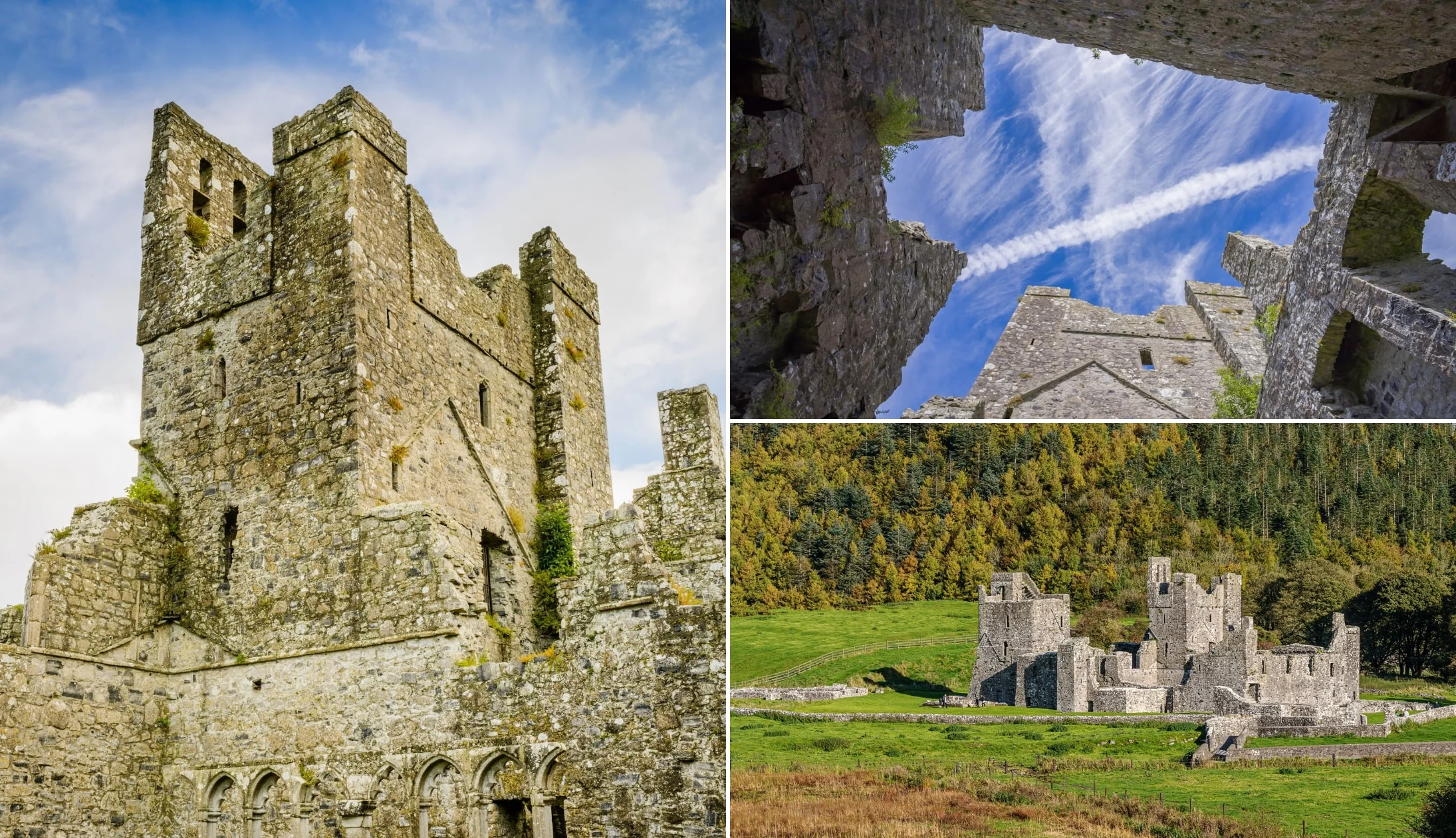
Photos via Shutterstock
Walk among the ruins of a Benedictine Abbey that dates back to the year 630 AD. Despite its age, it has been remarkably well-preserved and is a superb place to ramble, take photographs, and reflect on the ancient history of the place. Located just north of Lough Lene, it’s surrounded by gorgeous scenery and makes for a tranquil stop on your tour.
Stop 3: Loughcrew Passage Tombs

Photos via Shutterstock
The Loughcrew Passage Tombs, located on a site known as the Hills of the Witch, date back to 3000 BC. They’re spread over four rolling peaks that stand proud of the surrounding landscape. Your guide will take you around the site as you explore the mythology and ancient history of these incredible monuments.
Please note that the walk up to the cairns is very steep and may prove difficult for those with low levels of fitness.
Stop 4: Trim Castle

Photos via Shutterstock
Trim Castle dates back to the 12th century and is steeped in history as the site of many battles and raids. Despite its tumultuous history, it remains in great shape, with an intact tower house and walls. You’ll take a guided tour that lasts about 45 minutes.
Along the way, you’ll explore the various halls and chambers, before heading to the top of the castle to admire the amazing views of the surrounding town and countryside. If you don’t fancy going inside, you can enjoy a couple of lovely riverside walks around the outside of the castle.
Stop 5: Hill of Tara
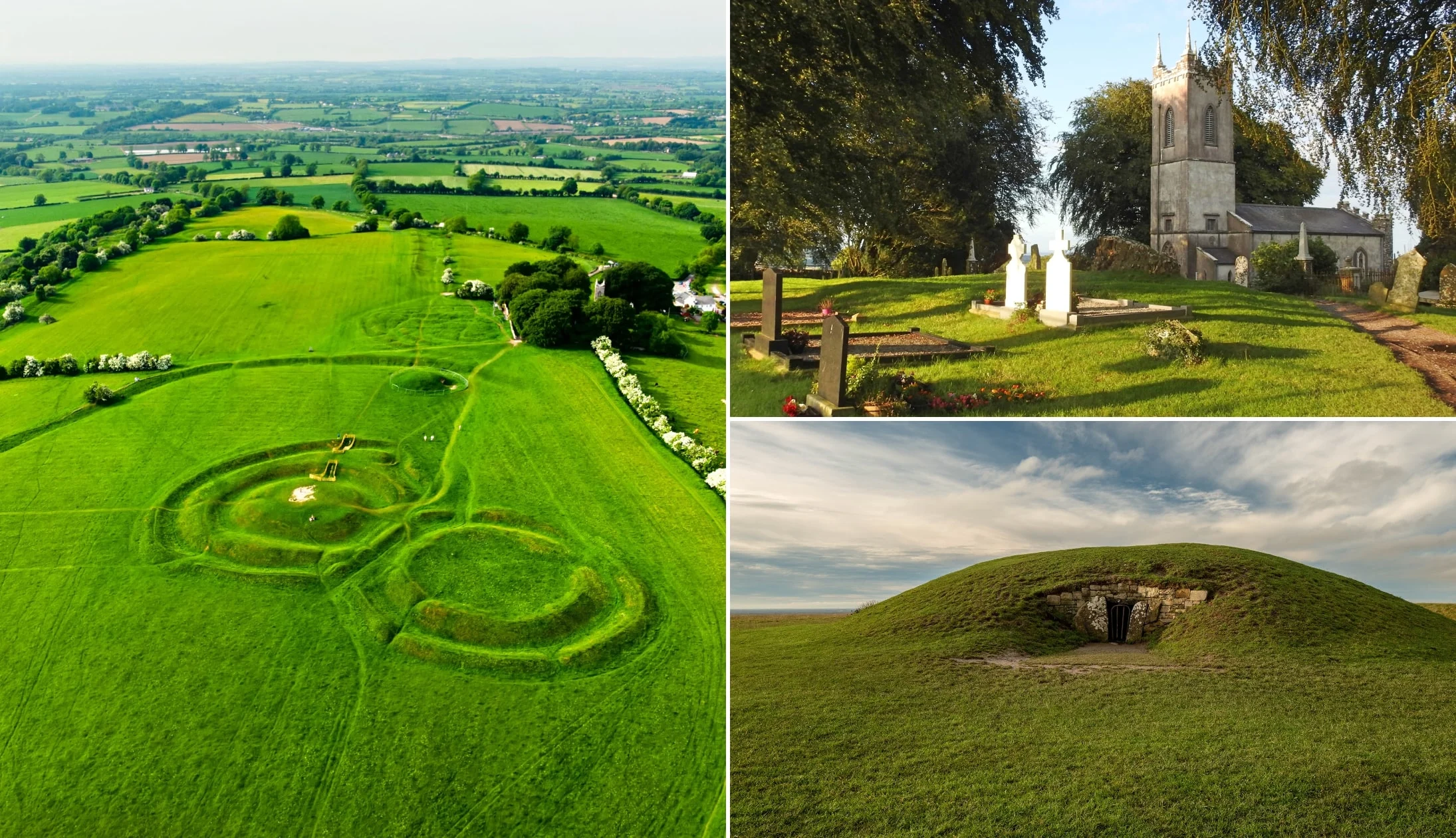
Photos via Shutterstock
Your final stop of the day is the iconic Hill of Tara. Dating back to the Iron Age, this hilltop is a veritable archaeological treasure trove and was formerly the seat of the High Kings of Ireland. The area is awash with ancient monuments, including passage tombs and burial mounds that date back thousands of years.
You can enjoy a nice walk up onto the hills to get a better look at the various ancient sites. The surrounding scenery is also breathtaking, and you can see why it was so important to the High Kings of Ireland. If you fancy a coffee, drop by Maguires Cafe and Gift Shop to refuel.
Stop 6: Back to Dublin for the night

Different trad bars in Dublin. © Tourism Ireland
With the tour over, it’s time to head back to Dublin, just in time for a bit of dinner. Check our suggestions from yesterday and enjoy some of the best pubs and restaurants that Dublin has to offer. Need more ideas? We’ve got you covered.
Our Dublin food recommendations
There’s endless excellent restaurants in Dublin. However, if we had to pick one or two…
The first would be The Bull and Castle – it’s always a good choice and it’s right across the street from the Christ Church Cathedral.
An FX Buckley steakhouse (a Dublin institution), they offer a great range of steaks cooked to perfection, paired with their incredible beef dripping chips.
The Vintage Kitchen is an alternative, but it’s best to book in advance as it’s incredibly popular. A BYOB (bring your own bottle) place, the food is phenomenal, with a small but diverse menu that features classic Irish dishes with a contemporary twist.
Our Dublin pub recommendations
There’s certainly no shortage of great pubs in Dublin. If you’re a fan of old-school pubs, follow our Dublin pub crawl guide – it contains a short route with some of the city’s finest trad bars.
McNeils on Capel Street is an authentic Dublin pub, complete with wood panelling, impromptu folk sessions, and plenty of beers on tap.
The Long Hall is another must-see. Part Victorian time capsule, part vibrant boozer, it enjoys a fantastic atmosphere and is one of the most visually stunning pubs in the city.
You’ll find trad sessions at Pipers Corner every night of the week. O’Donoghues Bar on Merrion Row is another must-visit, with vintage decor and frequent trad sessions. It’s best-known as the home of the Dubliners, who used to play here regularly.
The Celt on Talbot Street is another great choice for live music, and while it’s not always trad, the bands are normally really good.
Day 5: The trip to Belfast and home

Photos via Shutterstock
Today’s the day you fly home and leave Ireland behind. You can ignore this section if you’re flying home from Dublin Airport, but if you have a flight booked from Belfast, read on.
You’ve two options for getting back to Belfast from Dublin. While we recommend the bus, we’ll outline both options below. Just be sure to give yourself plenty of time. Ideally, you’ll have an afternoon or evening flight booked.
Option 1: Bus
If you choose to travel by bus, you’ll need to take two. One that’ll leave you in Belfast, and one that takes you to either George Best Belfast City Airport, or Belfast International Airport. Aircoach provides a range of frequent services to Belfast from Dublin City.
This service departs from Dublin O’Connell Street Station and drops you off at Belfast Glengall Street Station, just around the corner from Europa Bus Centre. From here, you can take either the Translink 600 Airport Express directly to George Best Belfast City Airport or the Translink 300 Airport Express to Belfast International Airport.
Option 2: Train
The train from Dublin to Belfast is only really worth using if you’re flying out from George Best Belfast City Airport. It departs from Dublin Connolly Station and takes you all the way to Belfast Lanyon Train Station in about two hours. From there, you can take another train to Sydenham Station, a 15-minute walk from the airport terminal.
And that’s a wrap on this road trip
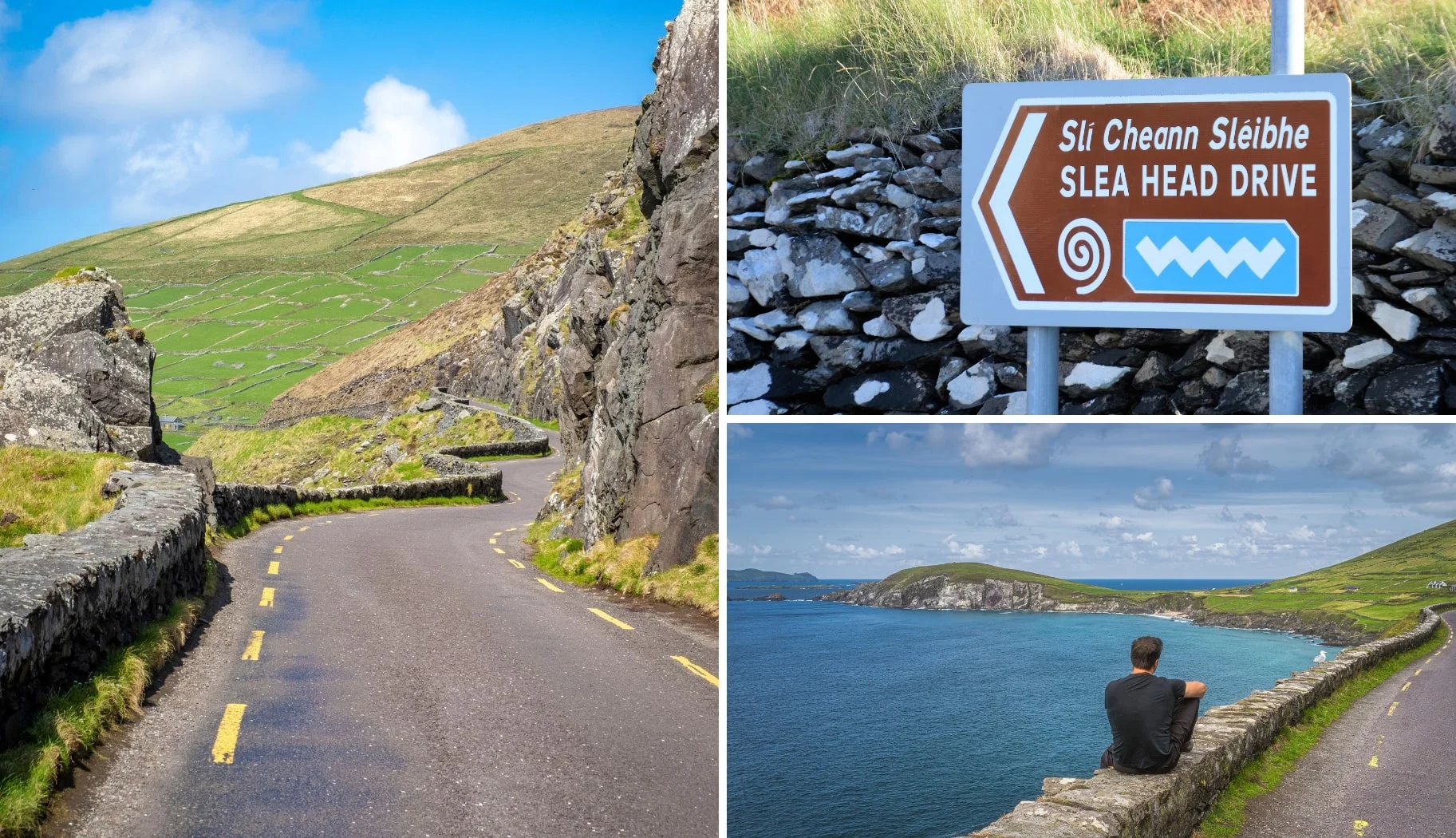
Photos via Shutterstock
We hope you found the above road trip guide useful. If you have any questions, ask in the comments below and we’ll do our best to help.
Or, if you’d like to browse our other Irish Road Trip itineraries, visit our Road Trip Hub – cheers!
Keith O’Hara has lived in Ireland for 35 years and has spent most of the last 10 creating what is now The Irish Road Trip guide. Over the years, the website has published thousands of meticulously researched Ireland travel guides, welcoming 30 million+ visitors along the way. In 2022, the Irish Road Trip team published the world’s largest collection of Irish Road Trip itineraries. Keith lives in Dublin with his dog Toby and finds writing in the 3rd person minus craic altogether.

